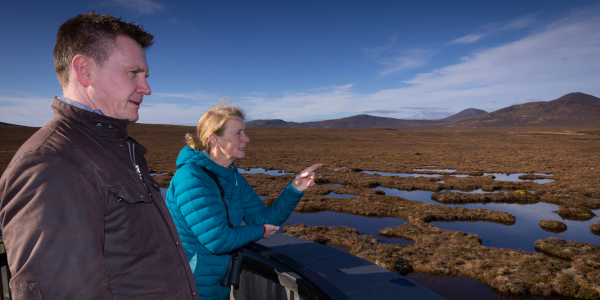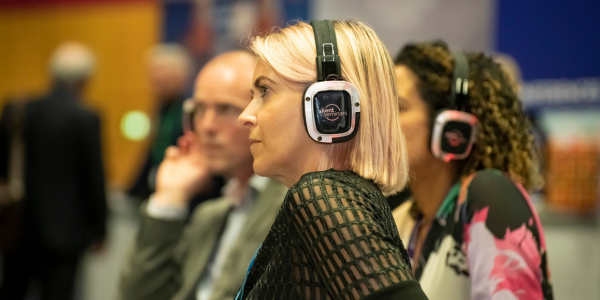
The national events agency has taken on a big task – but will it pay off?
Scotland will play host next year to The Solheim Cup, the ladies’ equivalent to The Ryder Cup golf competition that sees the cream of Europe’s golfers face off against the best of the United States. There is nothing unusual about Scotland hosting a golf competition, it does so all the time, but there is something different about this event, whose 16th edition will be staged at Gleneagles from September 9 to 15, 2019.
Instead of bidding to host the event, and letting the organisers then get on with the commercial and technical delivery of the fixture, when EventScotland entered the mix to stage the competition three years ago, it did so in the knowledge that it would essentially be taking over the full rights and responsibilities for organising the Ladies European Tour’s signature event.
“I think it’s probably fair to say that we’re the first country that’s bid for and won a Solheim Cup on that model,” says Alan Grant, Senior Golf Manager at EventScotland. “Predominantly before that, I think it’s been with the venues or golf clubs directly. It’s an interesting step for the public sector and EventScotland by stepping into that world of owning an event through the contractual set up,” he adds.
The rights fee was in the region of €1.5m with a total investment by Scottish Government of £19m in the event as a whole. EventScotland hopes of course to make that back on the revenue side of the coin, and any profit made will be returned to government coffers. Previous Solheim Cup events at Des Moines, US, and Killeen Castle, Ireland, have both delivered economic impact figures in the region of €35m, which augurs well in financial terms.
As the sole arbiter of the project, and lacking the in-house resource to deliver the event by itself, EventScotland entered into a tender process in 2016 to appoint an experienced ‘staging partner’ to assist. Three companies came forward, but two dropped out, leaving international sporting events company IMG as the sole bidder. Although not an ideal scenario for a ‘competitive’ process, IMG more than has the credentials to deliver events of this magnitude having delivered more than 750 golf events globally including the Ricoh Women’s British Open and the Johnnie Walker Championship over many years in Scotland.
Ross Hallett, VP, Golf, IMG, who I meet at EventScotland offices in Leith alongside Grant, gives me an indication of the sheer breadth of tasks that have to be managed by his organisation as it moves into the mission critical phase of event delivery early next year. Likening it to a ‘massive, organised spider’s web’, he cites everything from sponsorship acquisition to staging, grandstands, planning, ground staff, catering, courtesy cars, volunteers, infrastructure, signage, policing, media and hospitality. The list goes on. Logistics aside, both IMG and EventScotland are also focused on the higher order concepts of ‘equality, innovation and experience’.
“We want it to be the best-ever Solheim Cup in the history of the event and we want it to be a positive experience, accessible to as many people as possible,” says Hallett. “We want to engage families, we want to help promote golf and health and wellbeing and really engage with communities and as many people as possible, and the whole reason for Scotland doing it, which is putting Scotland on the map.”
Among the key aims is to reach out to new, younger audiences and women who may not have experienced golf before. Hallett says he’s keen to introduce ‘trick shot shows’, a golf zone for children and families to try out the sport, a celebrity event and possibly a conference – all with the idea of building the traditional one-hour opening ceremony into a full day of activities which can be picked up by general media as well as the specialist sports broadcasters. On that front, it has already been confirmed that Sky will be the host broadcaster in the UK with the Golf Channel in the US. Other media elements might include a free-to-air partner, content that can repackaged into streaming footage for mobile devices and social media, all with the combined purpose of reaching a global audience of more than 400m homes.
Grant, too, hopes that an innovative approach to pushing golf into new realms can help tackle Scotland’s low rate of female participation in the sport, which for a country that invented the modern game, plainly is an issue that needs to be tackled. A three-year funded post for a women and young person’s development manager will help that aim, but so, too, will a successful competition, if pitched right.
“The female participation rate is 13 per cent, which is far too low, compared to the likes of Germany and Sweden, which are in the 40per cent region,” says Grant. He adds: “I think all of golf is changing now by recognising that the way people are playing golf is not necessarily through membership; the family unit is a really important unit to get to. People will [these days] use a golf club as a leisure facility. That’s the challenge for golf in Scotland. How does that model change to fit with society. Everything’s quick and instant, there are very few communities in Scotland which have a church or community centre. But a golf club still exists in every single community and that’s the opportunity for golf to become the hub of the community. One of the exciting things about this event is that it is a golf event but the golf will take care of itself; it’s what collectively golf can do to support a whole range of things. It can’t solve everything but it can be certainly a vehicle to help society develop and move forward.”


![SEC celebrates record-breaking year for exhibitions in 40th anniversary year SEC[1]](https://eventsbase.co.uk/wp-content/uploads/2025/05/SEC1.png)

